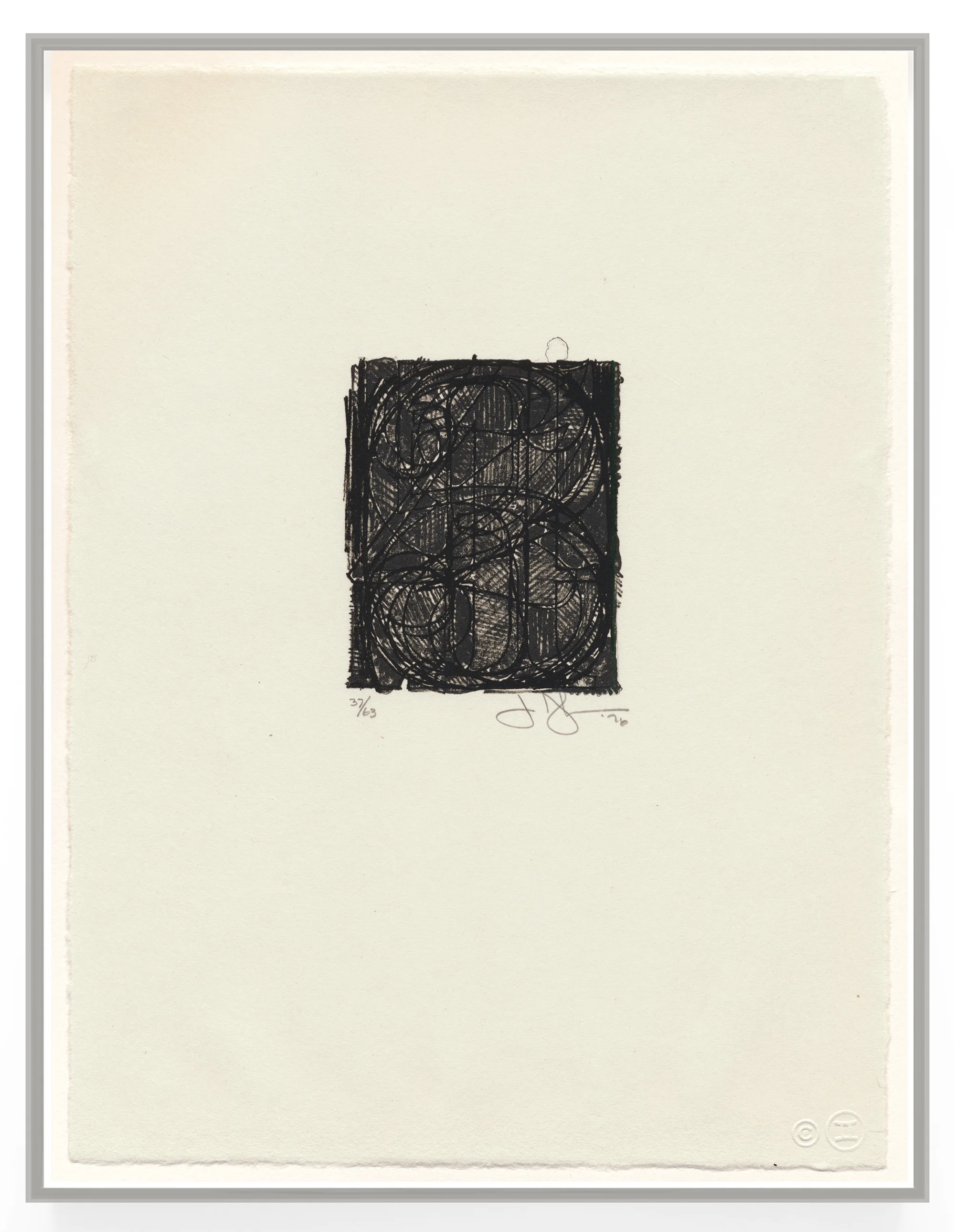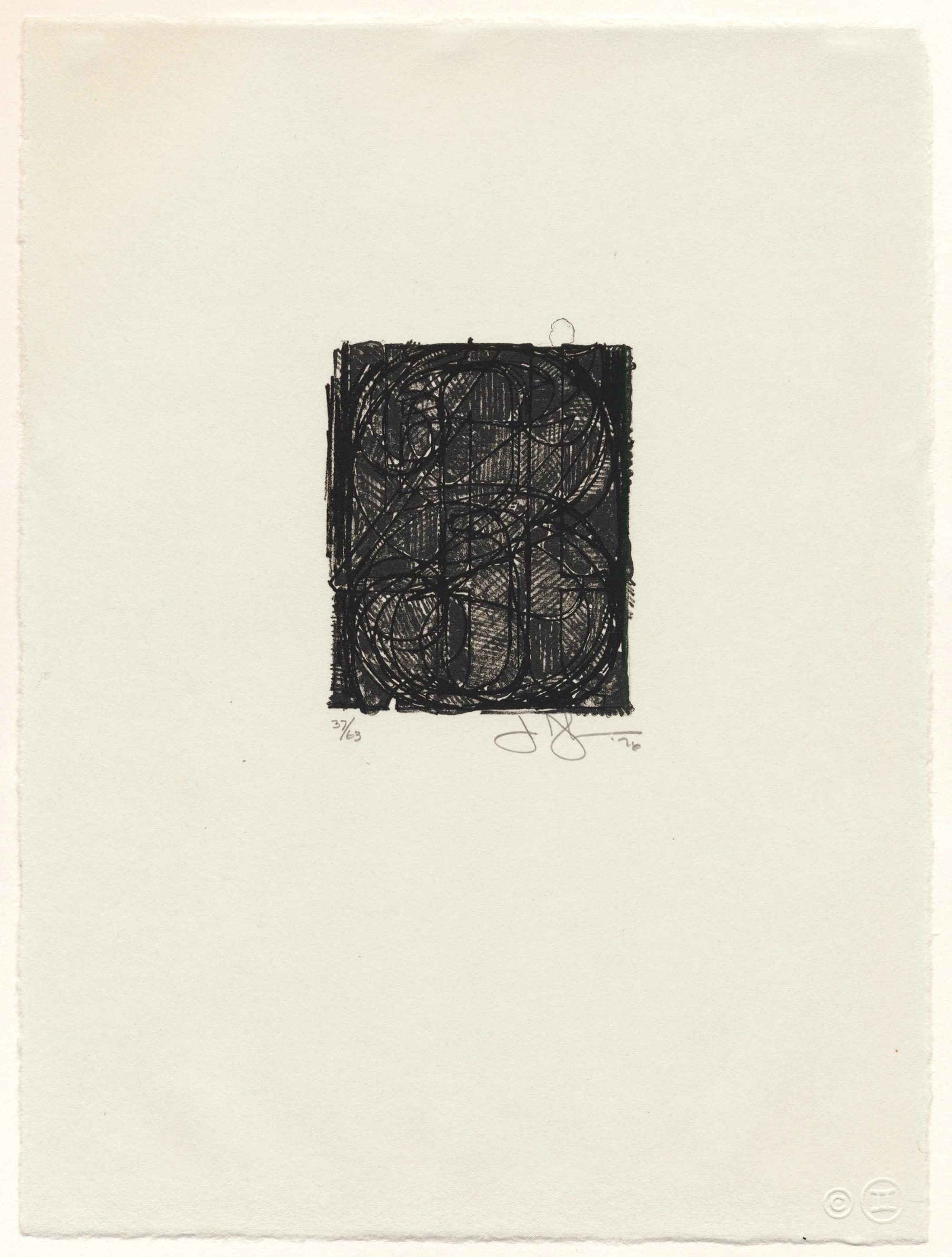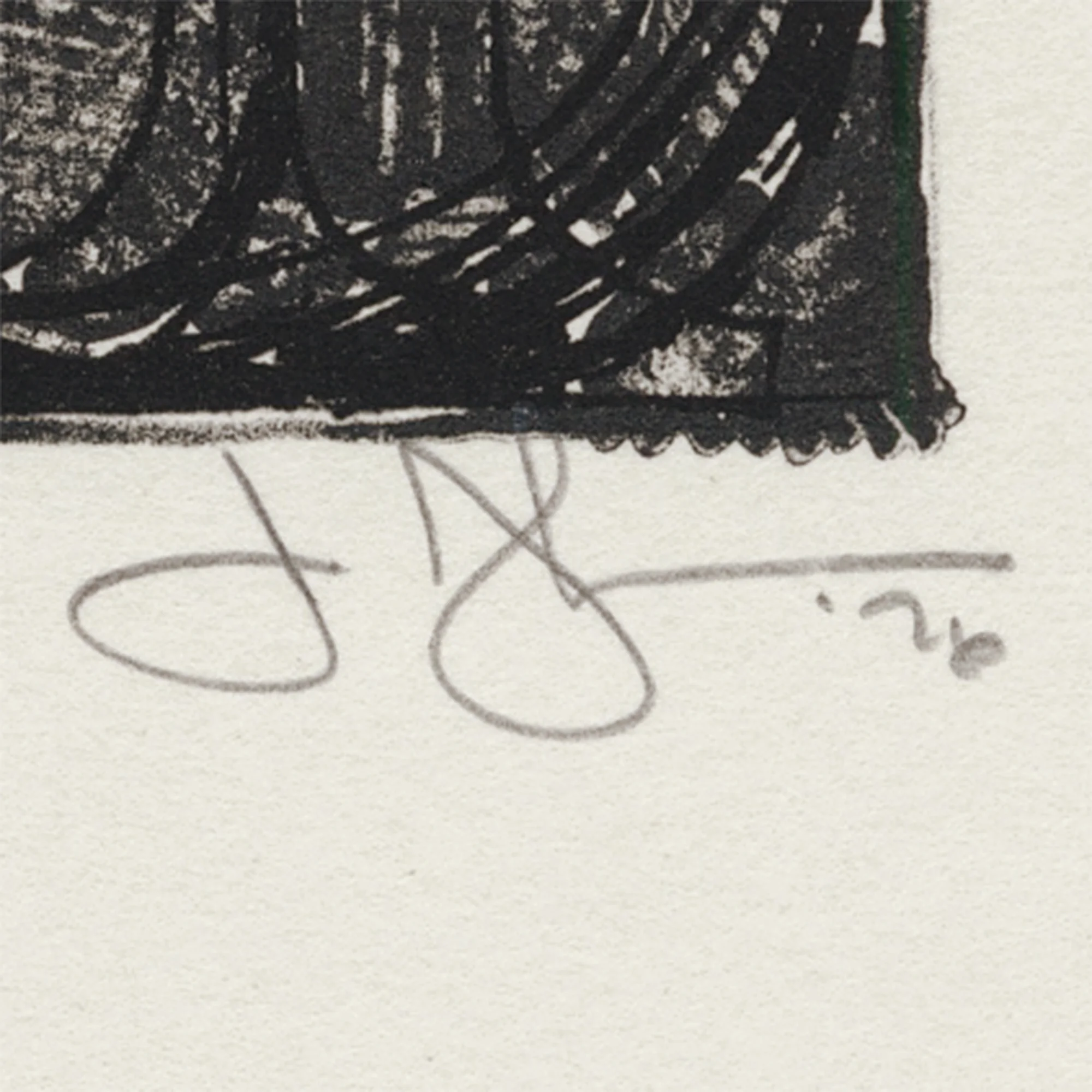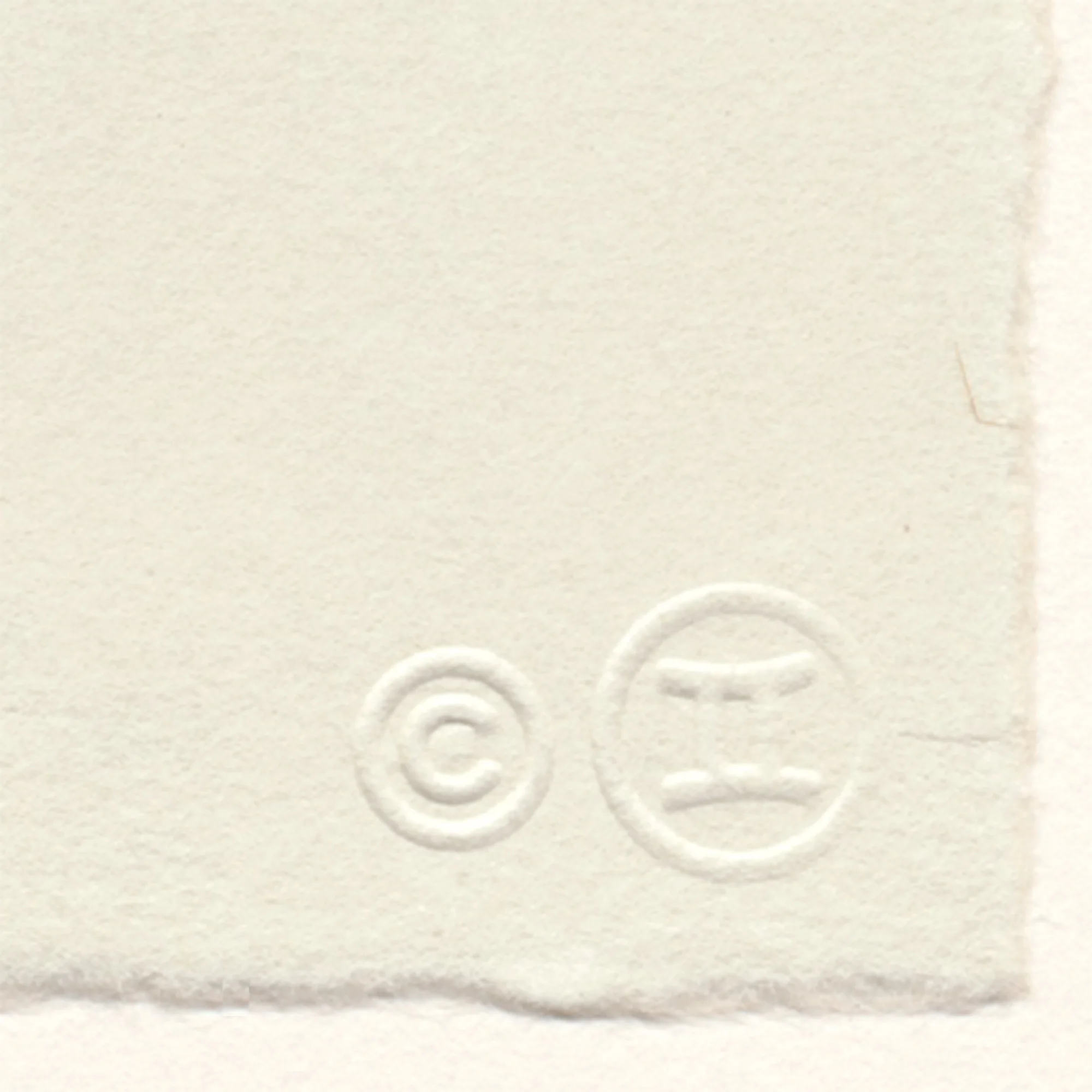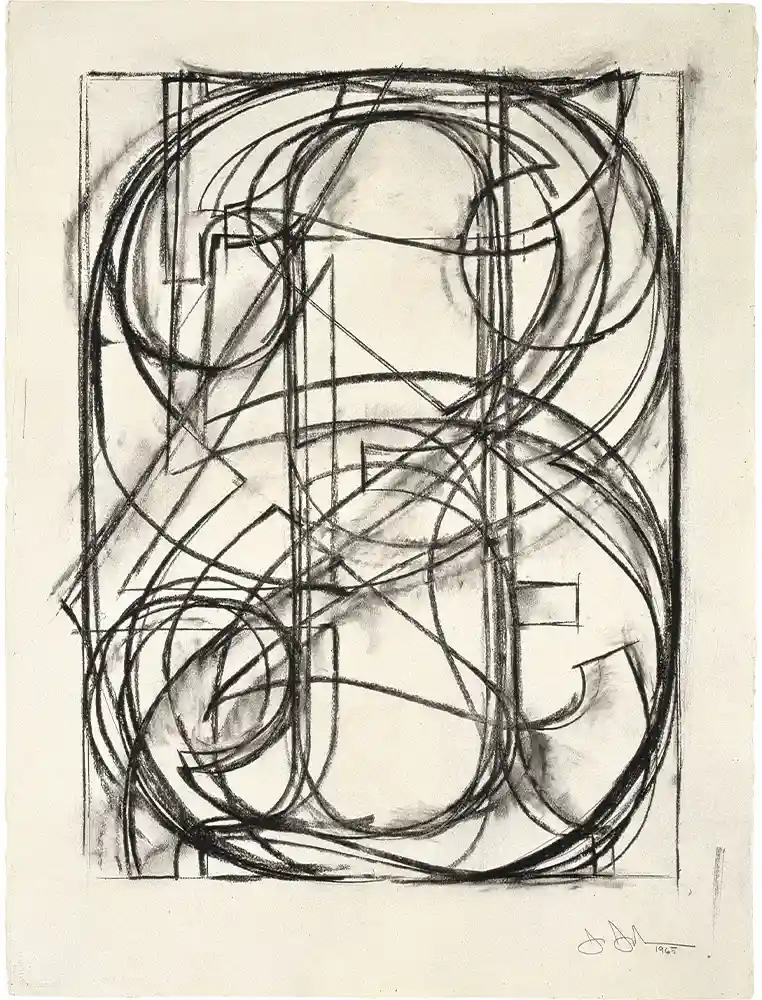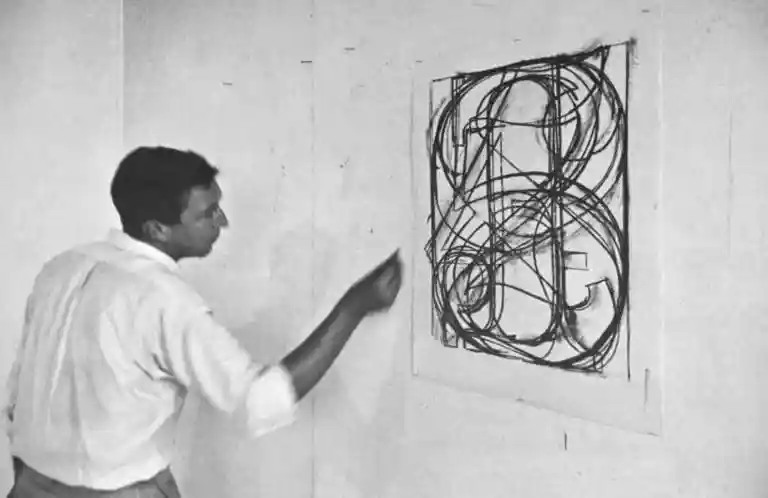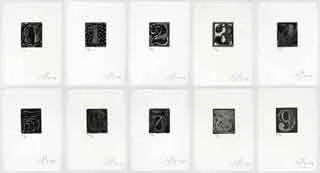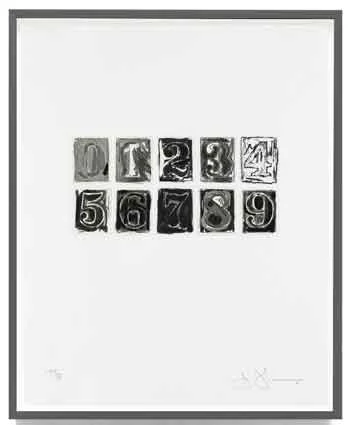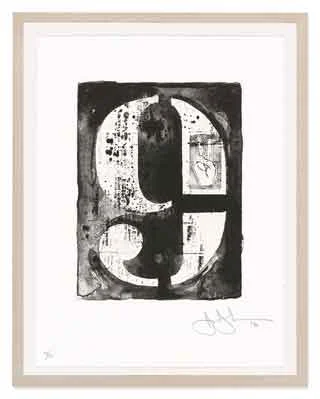Jasper Johns
0 Through 9 (ULAE 181), 1977
lithograph on Torinoko paper
image: 3 ¼ x 2 ½ inches
paper: 10 x 7 ½ inches
frame: 11 1/4 x 8 3/4 inches
edition: 63 with 12 AP's and 1 PP
signed and dated in pencil, numbered
published by Gemini G.E.L., Los Angeles, with their blindstamp and inkstamp on the reverse
National Gallery of Art, Washington D.C.
image: 3 ¼ x 2 ½ inches
paper: 10 x 7 ½ inches
frame: 11 1/4 x 8 3/4 inches
edition: 63 with 12 AP's and 1 PP
signed and dated in pencil, numbered
published by Gemini G.E.L., Los Angeles, with their blindstamp and inkstamp on the reverse
Literature
Richard Field, Jasper Johns Prints 1970-1977, Wesleyan University, Middletown, 1978, Catalogue Reference 257, p. 121, another impression reproduced in black and white
Richard Field, The Prints of Jasper Johns 1960-1993: A Catalogue Raisonne, ULAE, New York, 1994, Catalogue Reference ULAE 79, n.p., another impression reproduced.
National Gallery of Art, Washington D.C.
Additional Photos
Of all Johns's recurrent motifs, none has appeared more insistently in his oeuvre than numbers. From the 1950s until today, he has created more than 170 paintings, drawings, prints and sculptures that feature numerals in one of four principal structures: as individual figures; as superimpositions; and in sequences of zero to nine, either in two stacked rows or arranged in larger grids.
